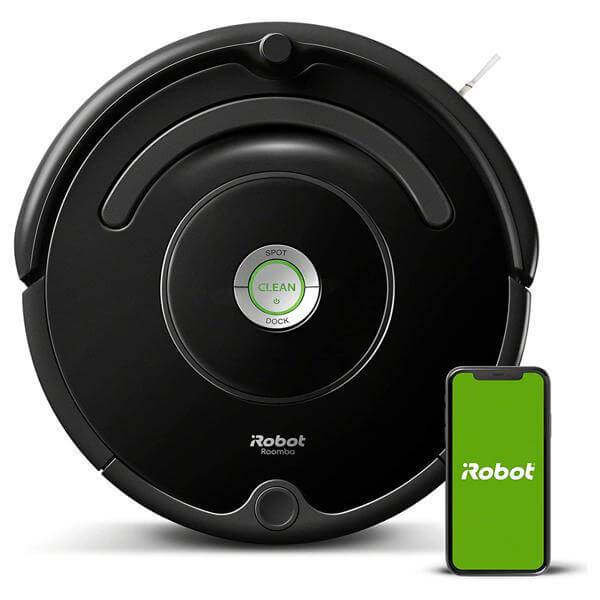Eco-friendly cleaning reduces your household’s exposure to harmful chemicals and makes your home healthier. 56% of people surveyed say they plan to switch to eco-friendly cleaning products this year. There’s no better time to start using these products than after a home decorating job. So, if you’re in the process of making over your home, here’s how to clean up in an eco-friendly way.
Tidying up
You should never clean brushes that were were used with oil-based paint down the sink. The first problem is that paint can clog your drains up, leaving you with a big problem to deal with. But the main issue is that it’s bad for the environment. Brushed used for oil-based paint need to be cleaned with solvents and they are hazardous to the environment. There are eco-friendly alternatives such as hot vinegar or a citrus solvent.
Brushes that are covered in latex paint, can be cleaned using soap and water and it is OK to use the sink. If it is a relatively small amount and it’s not a problem if you are on a public sewer system. If you are on a septic system, do not clean your brushes in the sink because it can cause damage to the septic chamber. Placing brushes and rollers in a jar with a little water and a dash of dish soap is one way to clean up without using too much water. Another option is to use a paint brush spinner. These can be used on both brushes and rollers and involves a spinning technique being used to thoroughly clean them.
Paint spills
Did you drop the paintbrush on the carpet while painting or have you got tiny specks of paint on your windows? Don’t worry as you can easily clean this mess up without damaging the environment or your health. A water and vinegar solution made from one part of each and then boiled can be used to remove paint from glass. Simply use a rag and scrub the paint off. Dried paint stains on carpets can be removed with hot water and a dash of dishwashing liquid. Soak the paint stained area and blot with paper towels. You’ll want avoid scrubin the paint into the carpet fibers as much a possible. Do your best to use the soak and blot method to remove as much as you can. If necessary, scrub into the stain with an old brush or toothbrush, blot, let it dry and vacuum up.
Wallpaper paste stains
Most homeowners have had a wallpaper paste disaster that has resulted in excess paste sitting on their freshly painted wall. If you didn’t clean it up before the paste dried, you’ll need to put in a lot of elbow grease. To remove the wallpaper paste stains, use a mix of hot water and dish soap. Rub it onto the affected area with a cloth. If it’s a particularly stubborn stain, add a little vinegar to the mix too. Worst case scenario, scrape it off with an eco-friendly wall scraper and paint back over the area.
Dust removal
From moving furniture around to sanding surfaces down, you’ll find dust in all sorts of places. The most effective way to remove this excess dust is to vacuum as much of it up as possible with an eco-friendly vacuum. These use low power, are corded, and have no bag or reusable bags in them. When wiping surfaces down, opt for cloths made from microfibers. Microfiber is long-lasting so less waste is produced. It’s also better at cleaning and can remove 99% of bacteria compared to the 30% cotton does. You can use microfiber cloths with eco-friendly detergents, such as ones that are plant-based. This can stop harmful chemicals from entering the atmosphere. Acid cleaning solutions are good for the environment, too. A lemon juice, vinegar, and baking soda mix can clean up dust, dirt, and germs.
Mopping the floor
Using a microfiber mop is also beneficial when mopping up your floors after decorating. But A more eco-friendly option is a steam mop. If there’s any paint or wallpaper paste stuck to the floors, the heat will help to dislodge them. Best of all, you don’t need to use any detergents or chemicals with a steam mop, so they really are good for the environment. Steam cleaners are also more hygienic than standard mops and buckets and they remove up to 99.9% of bacteria, so you can be sure your newly decorated home is as healthy as possible.
Don’t wash your dust sheets
Dust sheets are crucial for protecting your floors from paint, wallpaper paste, and excess dust when decorating. But don’t fall into the trap of throwing them into your washing machine when you’ve finished. If your dust sheets need freshening up and cleaning in preparation for your next room makeover, simply take them outside and give them a good shake. Hanging them on the washing line will help them too. You can even put them out on the line on a rainy day. This will give them a good clean and it won’t cost you or the environment anything.
Remove paint fumes
Paint fumes contain volatile organic compounds (VOCs). They can cause health problems, such as eye irritation, dizziness, and headaches. Eliminating paint odors is an important part of the clean-up job. There are lots of ways you can do this, although the most eco-friendly one is to open up the windows in the room. Placing bowls of white vinegar or baking soda in the room will also help to neutralize the room.
Decorating your home can give it a whole new lease of life. Just don’t forget the importance of cleaning up in an eco-friendly way afterward.





